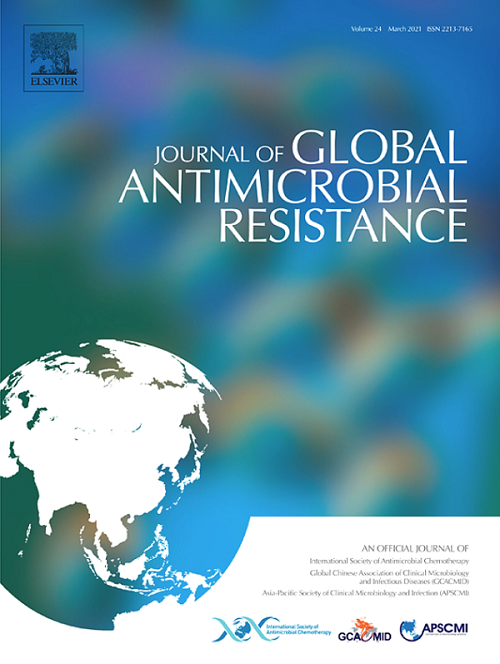Susceptibility of Enterobacterales Collected in the Middle East and Turkey to Aztreonam/Avibactam and Comparator Agents Stratified by Infection Source: ATLAS Surveillance Program 2018-2022
IF 3.7
3区 医学
Q2 INFECTIOUS DISEASES
引用次数: 0
Abstract
BACKGROUND
Aztreonam-avibactam (ATM-AVI) is a combination of aztreonam, notable for its stability to metallo-β-lactamases (MBLs), and avibactam, an inhibitor of class A, class C and some class D β-lactamases that inactivate aztreonam and are frequently co-carried with MBLs. ATM-AVI was recently approved in EU for treatment of adult patients with complicated intra-abdominal infections, hospital- and ventilator-associated pneumonia, and complicated urinary tract infections. This study evaluated the activity of ATM-AVI and comparators against Enterobacterales collected in six Middle Eastern countries from various infection sources, including lower respiratory tract infections (LRTI), urinary tract infections (UTI), intra-abdominal infections (IAI), skin and soft tissue infections (SSTI) and bloodstream infections (BSI).
METHODS
From 2018-2022, 6,326 non-duplicate Enterobacterales were collected from 17 hospitals in Israel, Jordan, Kuwait, Qatar, Saudi Arabia and Turkey for which infection source was specified. Susceptibility testing was performed by broth microdilution and interpreted using 2024 EUCAST breakpoints.
RESULTS
ATM-AVI showed excellent in vitro activity against isolates from all infection sources as evidenced by low MIC90 values (0.25 mg/L for BSI, IAI and LRTI isolates; 0.12 mg/L for SSTI and UTI isolates). Overall, ≥99.4% of the population from each infection type was susceptible to ATM-AVI. Among comparators, meropenem (88.0% - 94.4% susceptible) and amikacin (88.1% - 94.5%) were also active. The addition of AVI to ATM increased the susceptibility rate by >35 percentage points for each infection source over ATM alone.
CONCLUSIONS
ATM-AVI was the most potent agent examined regardless of infection source and offers promise for use against multidrug-resistant Enterobacterales, including MBL-carriers.
求助全文
约1分钟内获得全文
求助全文
来源期刊

Journal of global antimicrobial resistance
INFECTIOUS DISEASES-PHARMACOLOGY & PHARMACY
CiteScore
8.70
自引率
2.20%
发文量
285
审稿时长
34 weeks
期刊介绍:
The Journal of Global Antimicrobial Resistance (JGAR) is a quarterly online journal run by an international Editorial Board that focuses on the global spread of antibiotic-resistant microbes.
JGAR is a dedicated journal for all professionals working in research, health care, the environment and animal infection control, aiming to track the resistance threat worldwide and provides a single voice devoted to antimicrobial resistance (AMR).
Featuring peer-reviewed and up to date research articles, reviews, short notes and hot topics JGAR covers the key topics related to antibacterial, antiviral, antifungal and antiparasitic resistance.
 求助内容:
求助内容: 应助结果提醒方式:
应助结果提醒方式:


